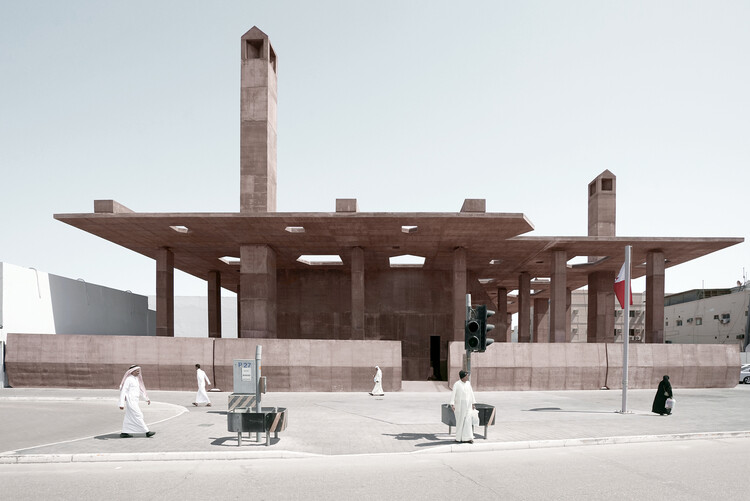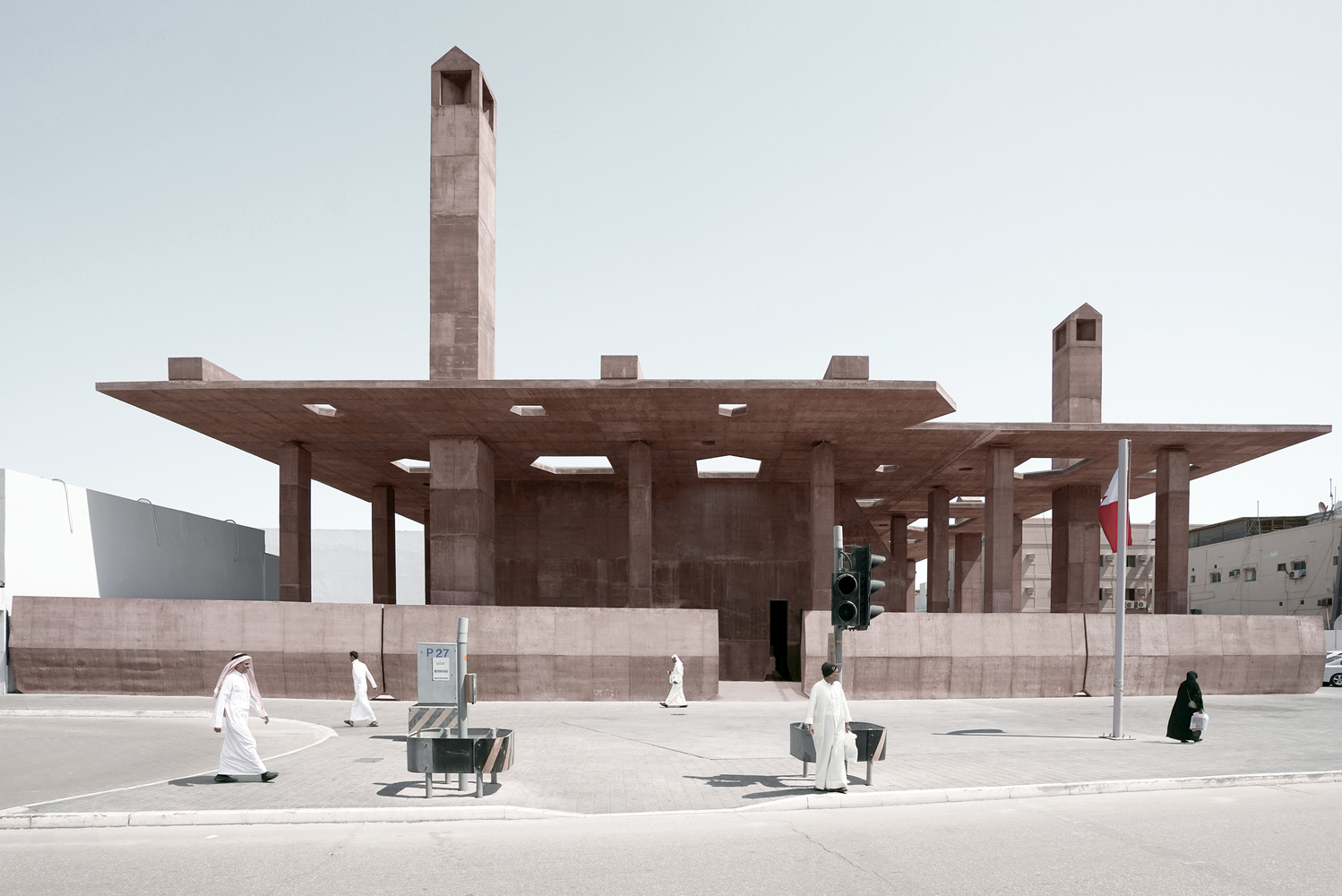 Pearling Site Museum and Entrance / Valerio Olgiati. © Archive Olgiati
Pearling Site Museum and Entrance / Valerio Olgiati. © Archive Olgiati
Share
Share
Or
https://www.archdaily.com/1030498/muharraq-a-meeting-ground-of-tradition-and-transformation
A place of rebirth, the city of Muharraq in Bahrain has undergone a visionary cultural and urban transformation, emerging as a pioneering model for culturally-led regeneration in the Arab world, particularly in the Gulf region. Once the capital of the country’s pearling industry, Muharraq has preserved, reinterpreted, and reintegrated its historical legacy into its evolving urban fabric.
Faced with the challenge of redefining its future—marked by an intact urban layout but deteriorating architectural structures—Muharraq envisioned a linear urban narrative, weaving together the memory of the industry through a sequence of key buildings. The city set out to connect the individual properties tied to its pearling past, such as homes of divers, boat captains, and pearl merchants.
 Four Car Parks / Christian Kerez. © Maxime Delvaux
Four Car Parks / Christian Kerez. © Maxime Delvaux
Using its existing streets and public spaces as a living museum, the Pearling Path initiative emerged and, in 2012, earned a place on the UNESCO World Heritage List—an unprecedented recognition for a project of its kind. Diverging from the monumental reconstructions typical of the region at the time, the project went beyond architectural restoration to rehabilitate the city’s social and cultural dynamics. It embraced a slower, more deliberate process that respected existing ownership, avoided displacement, prioritized community needs, and even preserved the original family names of the structures. Rather than an initiative aimed solely at tourism, the Pearling Path is deeply rooted in the needs of Muharraq’s residents. The Pearling Path also plays a significant educational and cultural role. Exhibitions housed in the restored properties share histories and the socio-economic dynamics of the pearling era, transforming the city into an immersive historical narrative.
The project adopted an unapologetic approach to new architecture, introducing contemporary buildings within the historic fabric. Designed by Anne Holtrop, Christian Kerez, and Valerio Olgiati—architects known for their sensitivity to context and materiality—these additions reflect a thoughtful dialogue between past and present, enhancing the urban experience while complementing the heritage setting. Striking a careful balance, these architectural interventions preserve memory without romanticizing it and embrace modernity without overpowering the past.
 35 Green Corner Building / Studio Anne Holtrop. Courtesy of Anne Holtrop
35 Green Corner Building / Studio Anne Holtrop. Courtesy of Anne Holtrop
Studio Anne Holtrop’s 35 Green Corner Building reinterprets traditional Bahraini architectural elements through minimalist forms and tactile materials, creating a subtle yet powerful addition to the urban fabric. Valerio Olgiati’s Pearling Site Museum and Entrance serves as a sculptural gateway, merging bold geometry with the historical context to invite reflection on Muharraq’s pearling legacy. Meanwhile, Christian Kerez’s Four Car Parks introduces a refined structural clarity that complements the city’s heritage streetscape, balancing functionality with architectural expression. Together, these projects exemplify a thoughtful and respectful integration of new architecture within a culturally rich environment, enriching Muharraq’s ongoing story of transformation.
Spearheaded by Her Excellency Shaikha Mai bint Mohammed Al Khalifa, President of the Bahrain Authority for Culture and Antiquities, the project was first conceptualized in 2007 and evolved under the guidance of Noura Al Sayeh, Advisor for Heritage Projects, who has directed the initiative since 2015. Dr. Britta Rudolff, a renowned specialist in World Heritage Sites, played a crucial role in shaping the UNESCO nomination and crafting the narrative structure of the Pearling Path. Their collaborative efforts anchored the project in both global heritage standards and local cultural realities.
 Pearling Site Museum and Entrance / Valerio Olgiati. © Archive Olgiati
Pearling Site Museum and Entrance / Valerio Olgiati. © Archive Olgiati
The success of the Pearling Path lies in the collaborative effort between the Bahrain Authority for Culture and Antiquities, the local municipality, and international partners. This cooperation enabled not only the physical transformation of Muharraq but also fostered renewed cultural and civic pride within the community.
Today, Muharraq stands as a rare and inspiring example of how cities can embrace their history to meet present challenges and reimagine their future.
